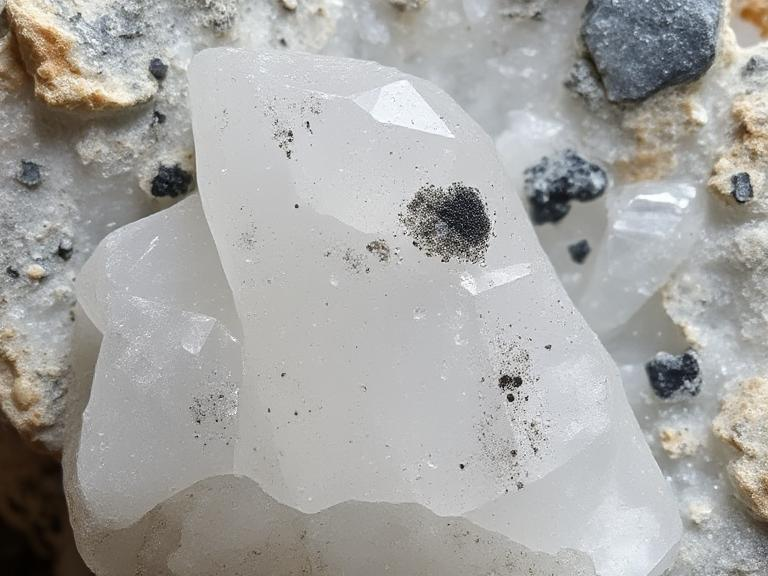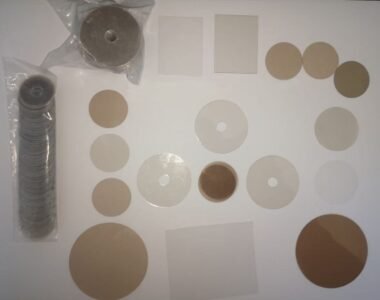Table of Contents
- Introduction
- What is Mica?
- The Role of Mica in Quartz
- Physical and Chemical Properties of Mica
- Key Benefits of Mica in Quartz Applications
- About AUKI MICA – High-end Mica Sheet Supplier
- Applications of Mica-Quartz Composites
- How to Choose the Right Mica Product
- Summary Table of Key Points
Introduction
Mica is a naturally occurring silicate mineral that is widely recognized for its exceptional thermal and electrical insulation properties. When embedded in quartz, mica enhances the material’s performance across various industrial applications. This article explores the properties and benefits of mica in quartz composites and introduces AUKI MICA — a leading mica materials supplier based in China, with global mining resources and a strong supply chain network.

What is Mica?
Mica is a group of silicate minerals that form in layered sheets. Due to its ability to split into thin, transparent layers, mica is extensively used in thermal, electrical, and mechanical applications.
Common Types of Mica:
- Muscovite: Light-colored, used in electronics and insulation.
- Phlogopite: Darker variant, stable at higher temperatures.
- Biotite: Contains iron and magnesium; used in geological research.
The Role of Mica in Quartz
When combined with quartz, mica enhances the overall strength, durability, and insulation properties of the composite material. These composites are widely used in construction, electronics, and decorative surfaces.
Key Roles of Mica in Quartz:
- Thermal Stability: Mica provides high heat resistance when blended with quartz.
- Electrical Insulation: Excellent dielectric strength is ideal for electronic components.
- Aesthetic Appeal: Adds natural shimmer and color variation in quartz countertops and tiles.
- Reinforcement: Strengthens the mechanical integrity of quartz surfaces.
Physical and Chemical Properties of Mica
Mica’s properties make it a preferred material in a wide array of high-performance applications.
- Thermal Resistance: Withstands temperatures up to 1000°C depending on type.
- Electrical Insulation: High dielectric strength and low power loss.
- Chemical Stability: Resistant to acids, alkalis, and moisture.
- Flexibility: Can be split into ultra-thin sheets without losing strength.
- Transparency: Allows light transmission, useful in optical applications.
Key Benefits of Mica in Quartz Applications
1. Enhanced Thermal Performance
Quartz-mica combinations are ideal for applications requiring temperature resilience. Mica’s natural resistance to heat helps prevent thermal deformation and maintains surface integrity in high-heat environments.
2. Superior Electrical Insulation
Used in electronic quartz substrates, mica prevents electrical leakage and ensures stable conductivity, especially in high-frequency circuits.
3. Added Mechanical Strength
The flaky structure of mica distributes stress across surfaces, increasing durability and resistance to impact or wear.
4. Visual and Decorative Enhancement
In engineered quartz surfaces, mica adds visual depth and sparkle, enhancing the aesthetic value of countertops, wall panels, and flooring.
5. Cost-effective Customization
Mica-infused quartz can be tailored to meet specific thermal, electrical, or aesthetic requirements, offering flexible solutions for multiple industries.
About AUKI MICA – High-end Mica Sheet Supplier

AUKI MICA is a trusted supplier of high-quality mica sheets and mica insulation products based in Hubei Province, China. With exclusive mining resources in Pakistan and Afghanistan, and long-term collaborations with V1-grade mica mines in India and Africa, AUKI MICA ensures consistent supply and top-grade material processing.
What Sets AUKI MICA Apart:
- Global mining network ensures stable, premium raw materials.
- State-of-the-art processing facilities in China for high precision manufacturing.
- Custom mica solutions tailored to your industry and application.
- Reliable export capability with international compliance and logistics.
AUKI MICA Product Range:
Applications of Mica-Quartz Composites
1. Electronics and Semiconductors
- Printed circuit boards (PCBs)
- Insulators for transistors and resistors
- Substrates for high-frequency electronic circuits
2. Interior Design and Architecture
- Quartz countertops with mica sparkle
- Decorative wall tiles with mica textures
- Fire-resistant wall panels
3. Industrial Machinery
- Insulation in motors and transformers
- High-temperature gaskets and seals
- Stove windows and furnace sight glasses
4. Optics and Lighting
- Lampshade mica for natural diffusion
- Mica wave plates in optical instruments
How to Choose the Right Mica Product
Step-by-step Guide:
- Define your application: Heat resistance, electrical insulation, decorative, etc.
- Select the mica type: Muscovite for general use, Phlogopite for higher temperatures.
- Choose the form: Sheets, washers, discs, wave plates, or custom shapes.
- Contact a supplier: Work with an experienced partner like AUKI MICA for custom solutions.
Summary Table of Key Points
| Aspect | Details |
|---|---|
| Mica Properties | Heat-resistant, insulating, chemically stable, flexible, transparent |
| Benefits in Quartz | Improved thermal/electrical performance, durability, aesthetic appeal |
| Common Applications | Electronics, countertops, architecture, optics, insulation |
| Top Supplier | AUKI MICA (China) – Owns mines in Pakistan, Afghanistan, sources in India, Africa |
| Available Products | Gauge Glass Mica, Mica Discs, Wave Plates, Stove Windows, etc. |
| Customization | Yes – AUKI MICA provides tailored solutions based on specific industrial needs |

